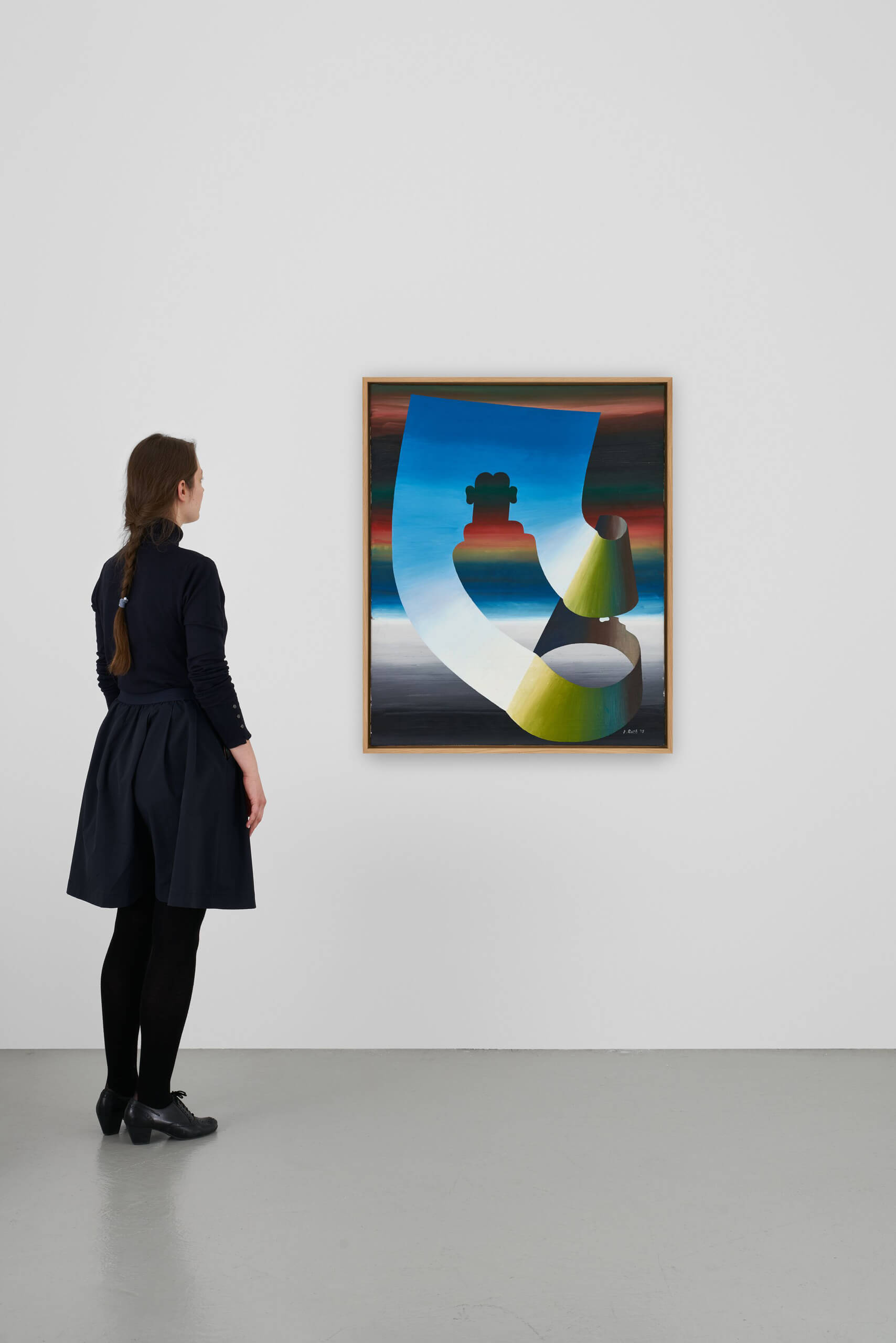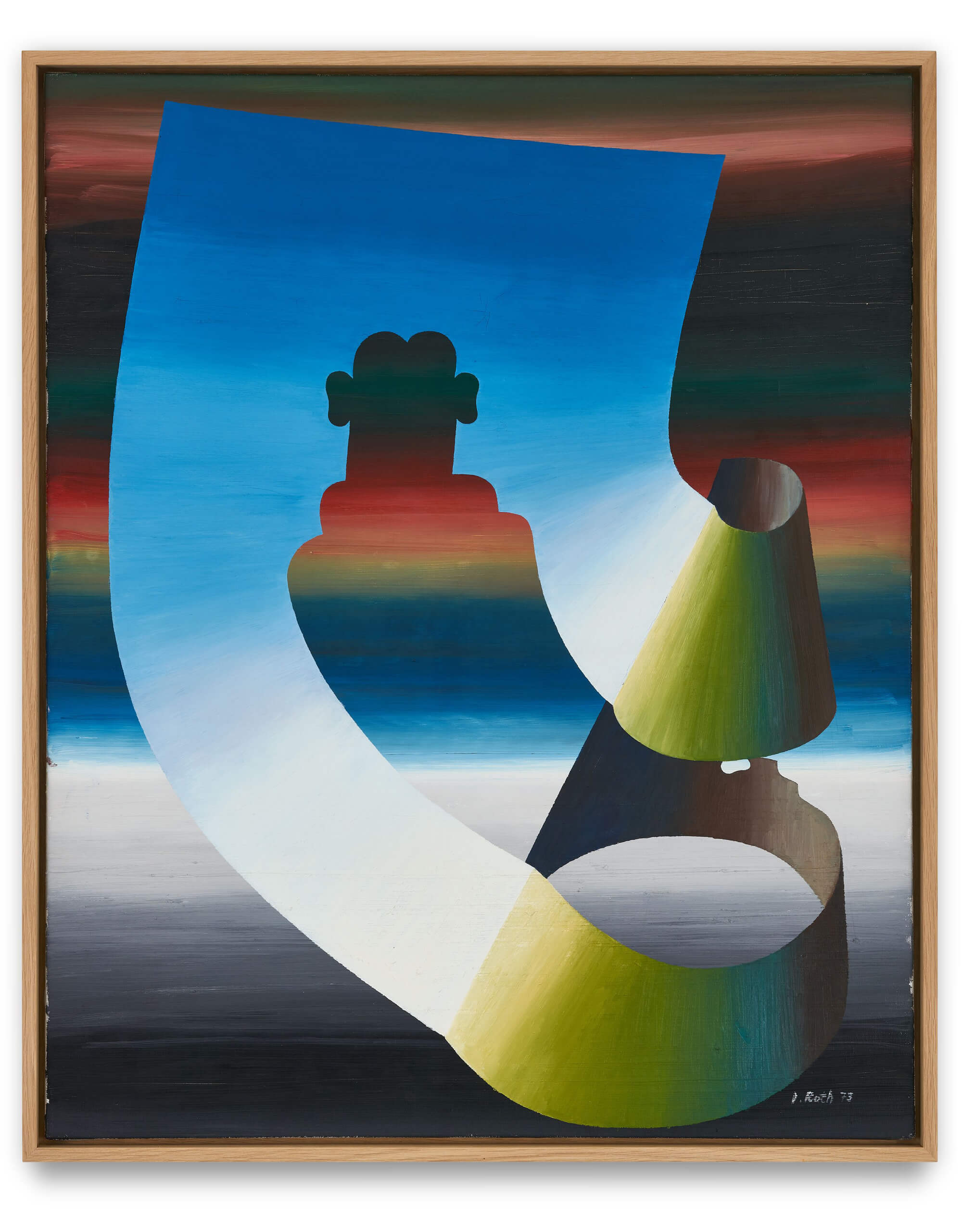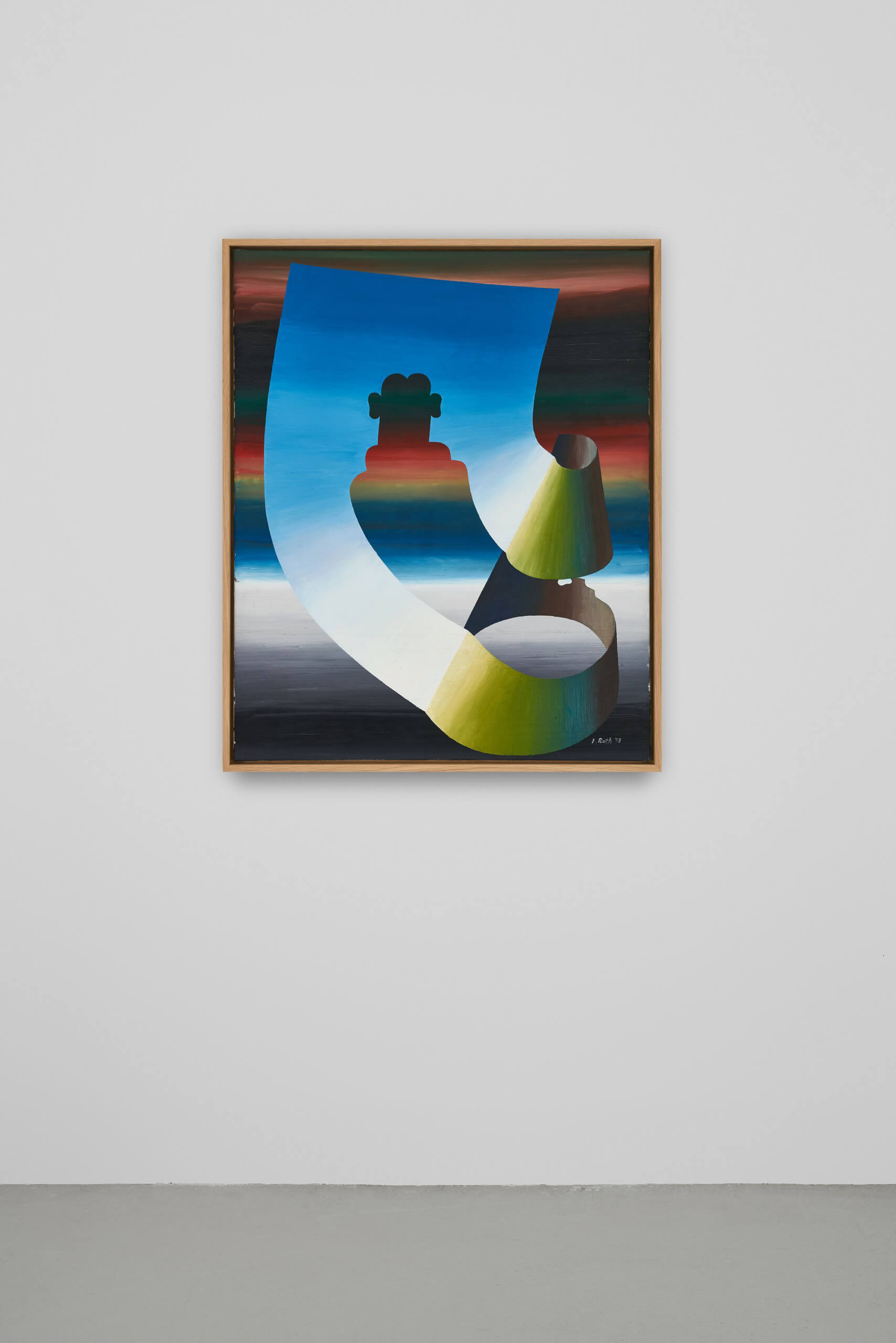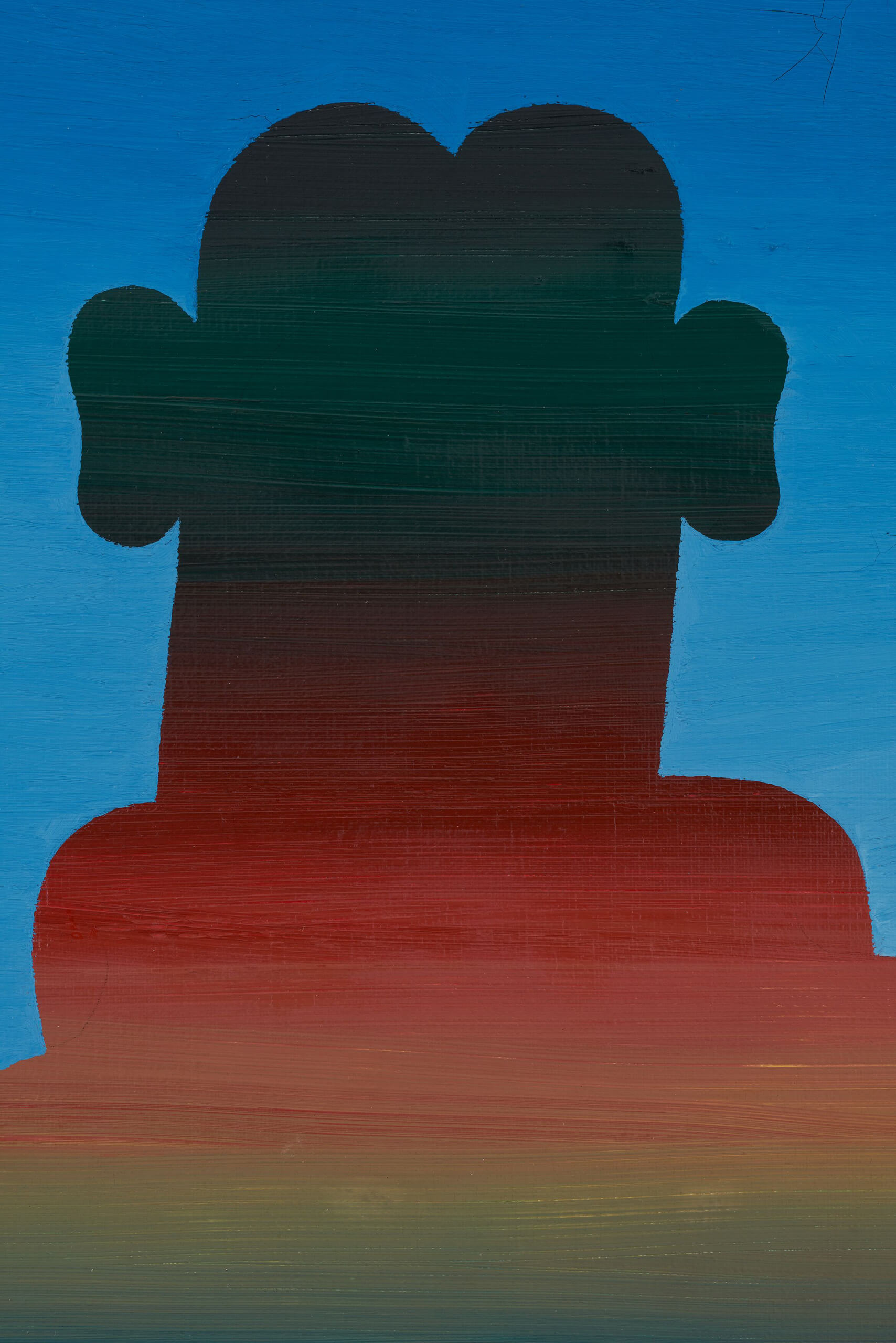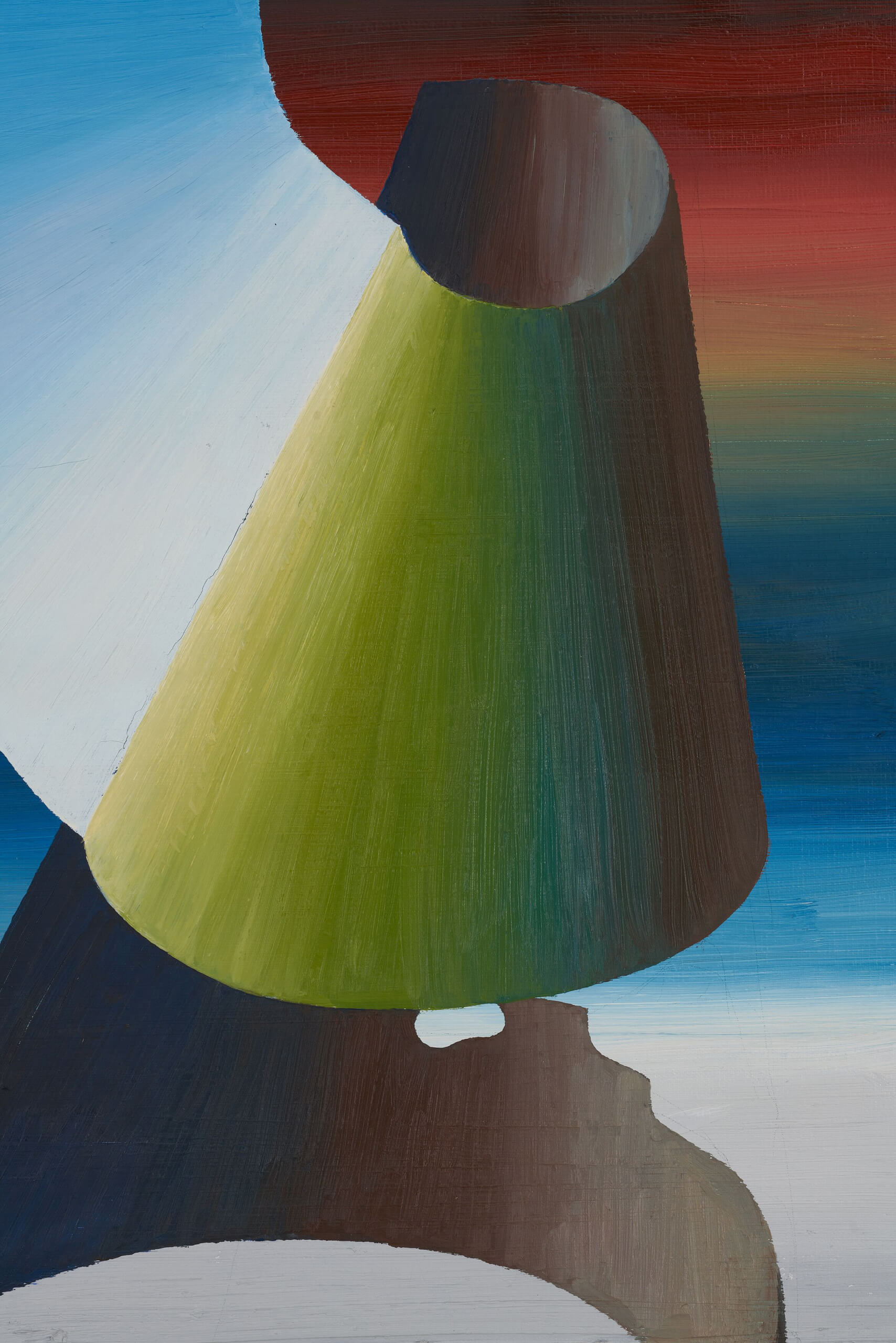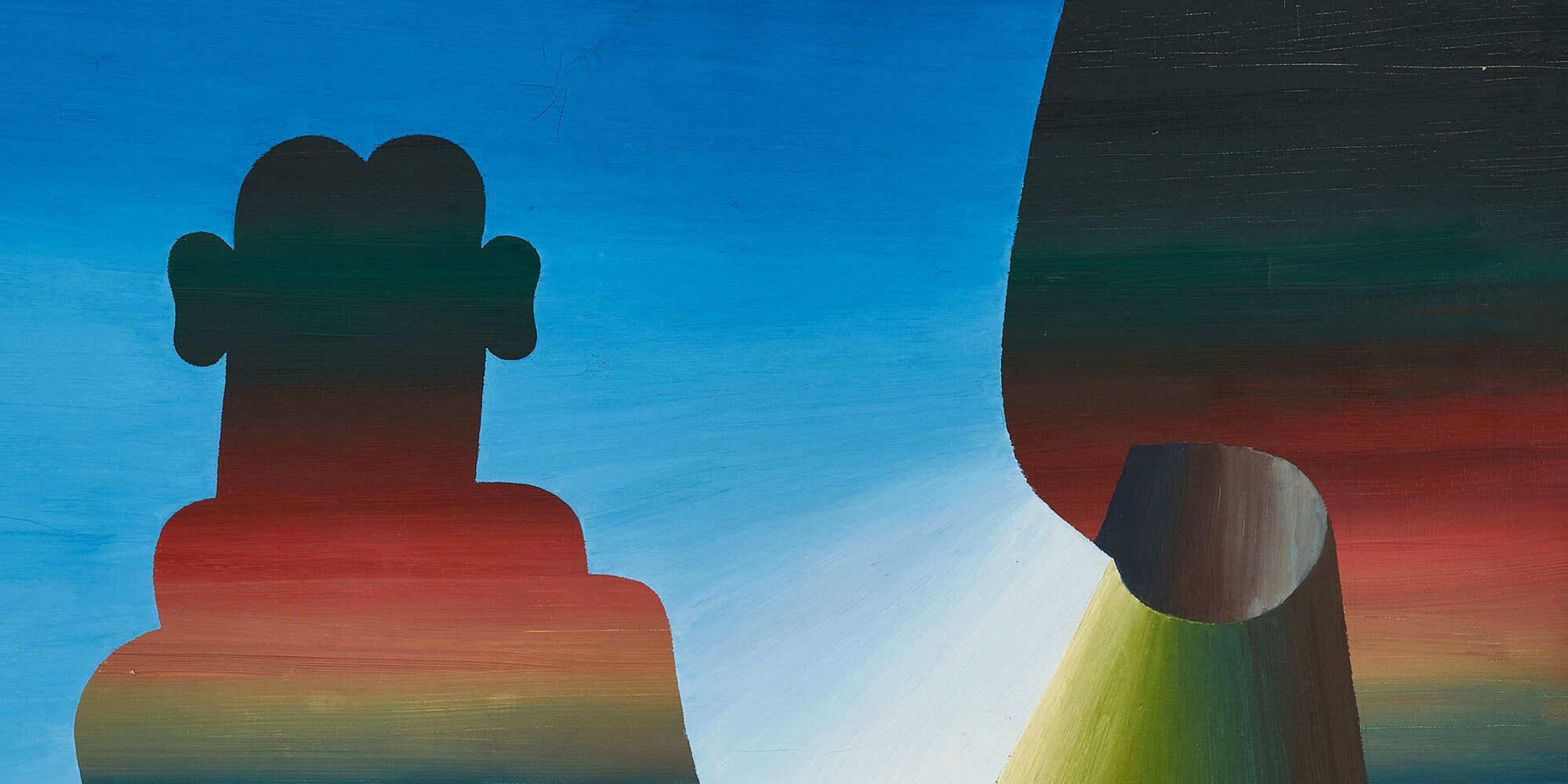
Dieter Roth
Doppel-Selbstbildnis
(Double Self-portrait)
Doppel-Selbstbildnis
(Double Self-portrait)
1973 Oil on canvas 110.5 x 90 cm / 43 1/2 x 35 3/8 in 114.8 x 94.5 x 6 cm / 45 1/4 x 37 1/4 x 2 3/8 in (framed)
A rare painting, once in the prominent Theo and Elsa Hotz Collection, ‘Doppel-Selbstbildnis (Double Self-portrait)’ reveals an important dialogue between Dieter Roth’s work from the 1970s and his wider practice. Combining Roth’s ceaseless experimentation with his abiding interest in self-portraiture, this painting is an ode to the artist’s boundless imagination. A driving force of Post-War European art, Roth produced a diverse oeuvre during his five-decade-long career that included drawing, painting, sculpture, film, immersive installations and bookmaking. Roth experimented with materials and language, exploring the interplay of different mediums, which underscores his distinct approach to artmaking.
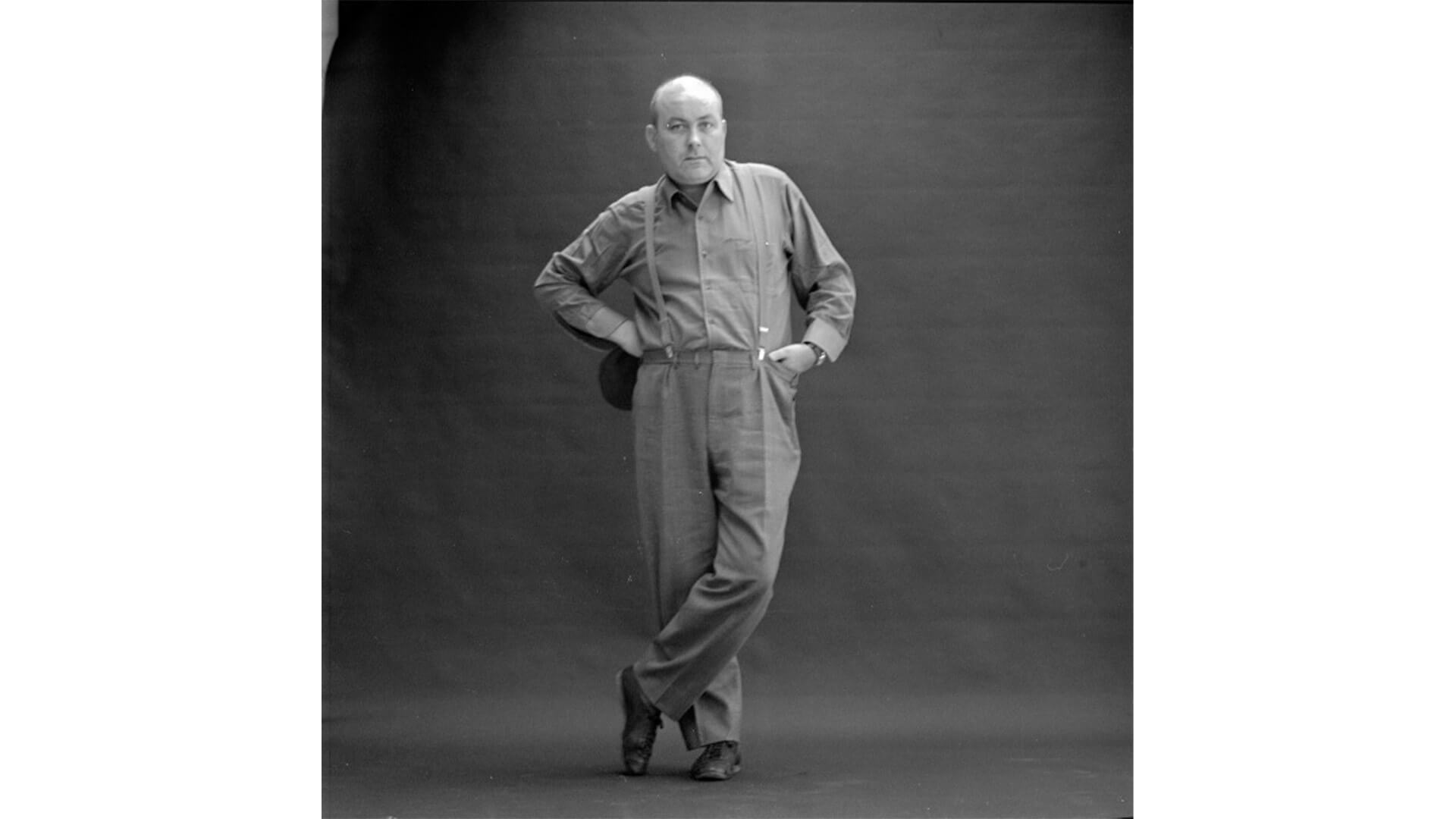
Born in April 1930 in Hannover, Germany, Roth gained asylum in Bern, Switzerland during World War II. There, he encountered the work of Paul Klee as well as an artistic scene that was heavily influenced by the principles of Concrete art pioneered by Max Bill. Roth’s early work speaks to this influence—his compositions were self-contained, tightly organized, and geometrically abstract. However, in the 1960s, Roth abandoned his geometrical reserve and instead dedicated his practice to the unpredictable elements of the everyday and chance.
Dieter Roth portrayed by Lothar Wolleh, 1970, Dusseldorf, silver gelatin print, 39 x 39 cm. © Lothar Wolleh Estate, Berlin
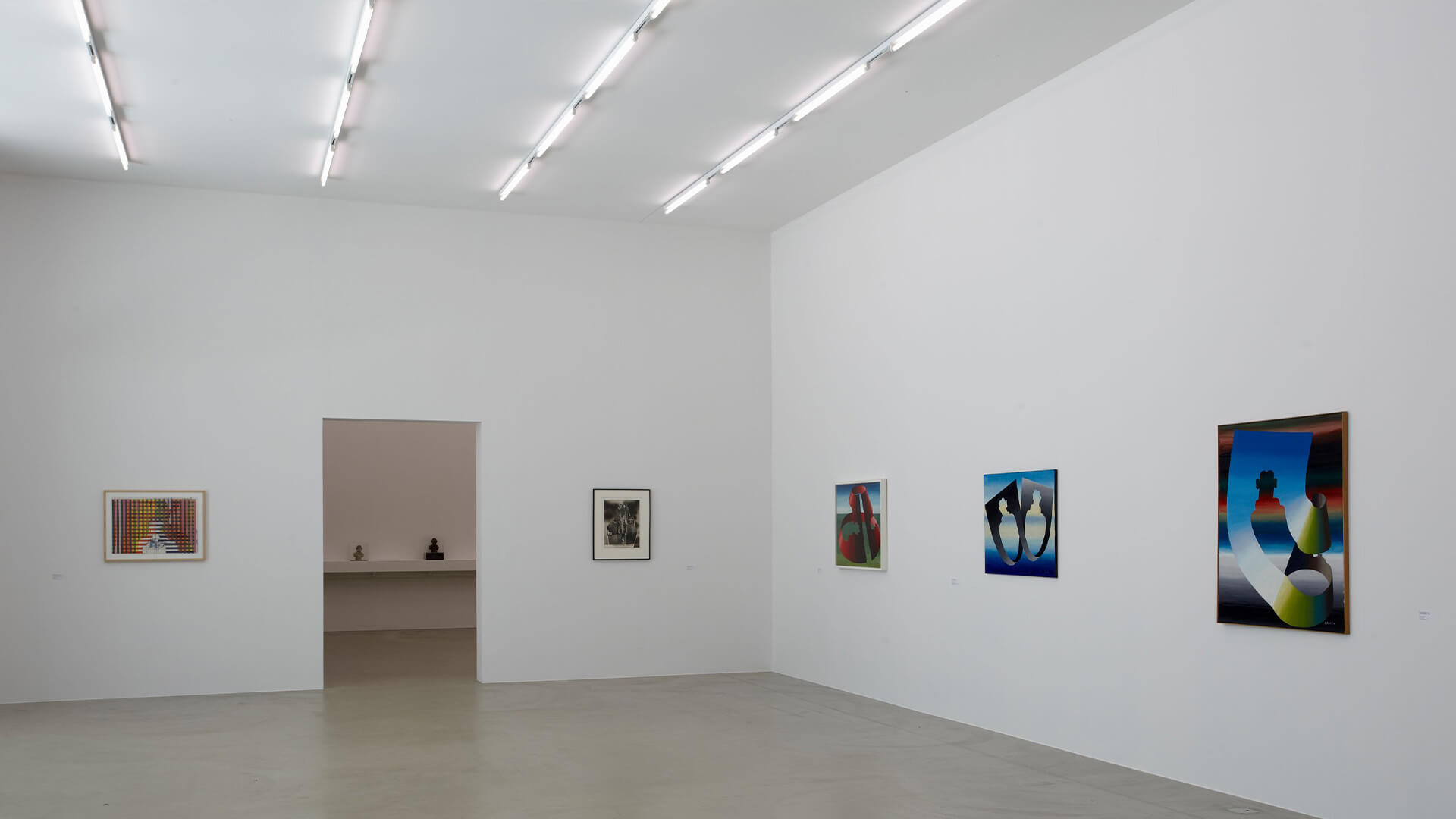
In the 1970s, after years of experimenting with perishable materials, Roth executed four oil paintings with Surrealist undertones, including ‘Doppel-Selbstbildnis.’ The importance of these rare paintings is widely recognized and the series was included in two critically acclaimed traveling exhibitions: ‘Roth Time: A Dieter Roth Retrospective’ (2003-2004), held at both the Schaulager Basel and MoMA QNS and P.S.1 Contemporary Art Center, and ‘Dieter Roth. Selbste’ (2011-2012), held at both the Aargauer Kunsthaus and the Museum der Moderne Salzburg.
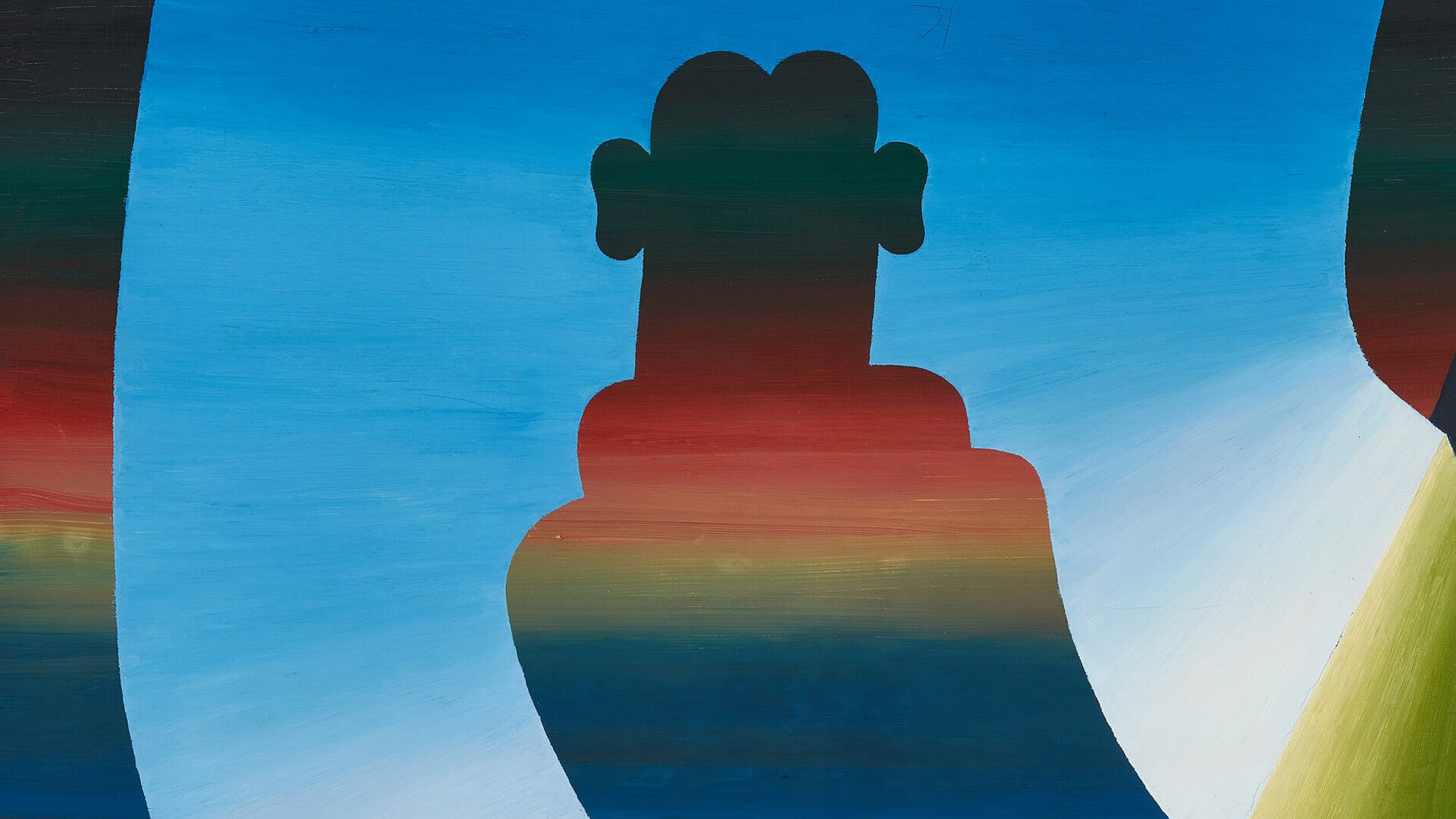
Central to Roth’s practice was self-portraiture, which he rigorously explored through his art and journals. Here, Roth renders the pictorial devices that underscore figurative painting in an enigmatic manner, challenging the conventions of traditional self-portraiture. Executed in an Old Master style, gradually building up thin layers of oil paint to achieve a rich tonal range, Roth’s profile is cut from a plane comprised of a myriad of luminous and subtly blended colors. In line with the title, he includes another cut-out on the curled bend that is barely visible.
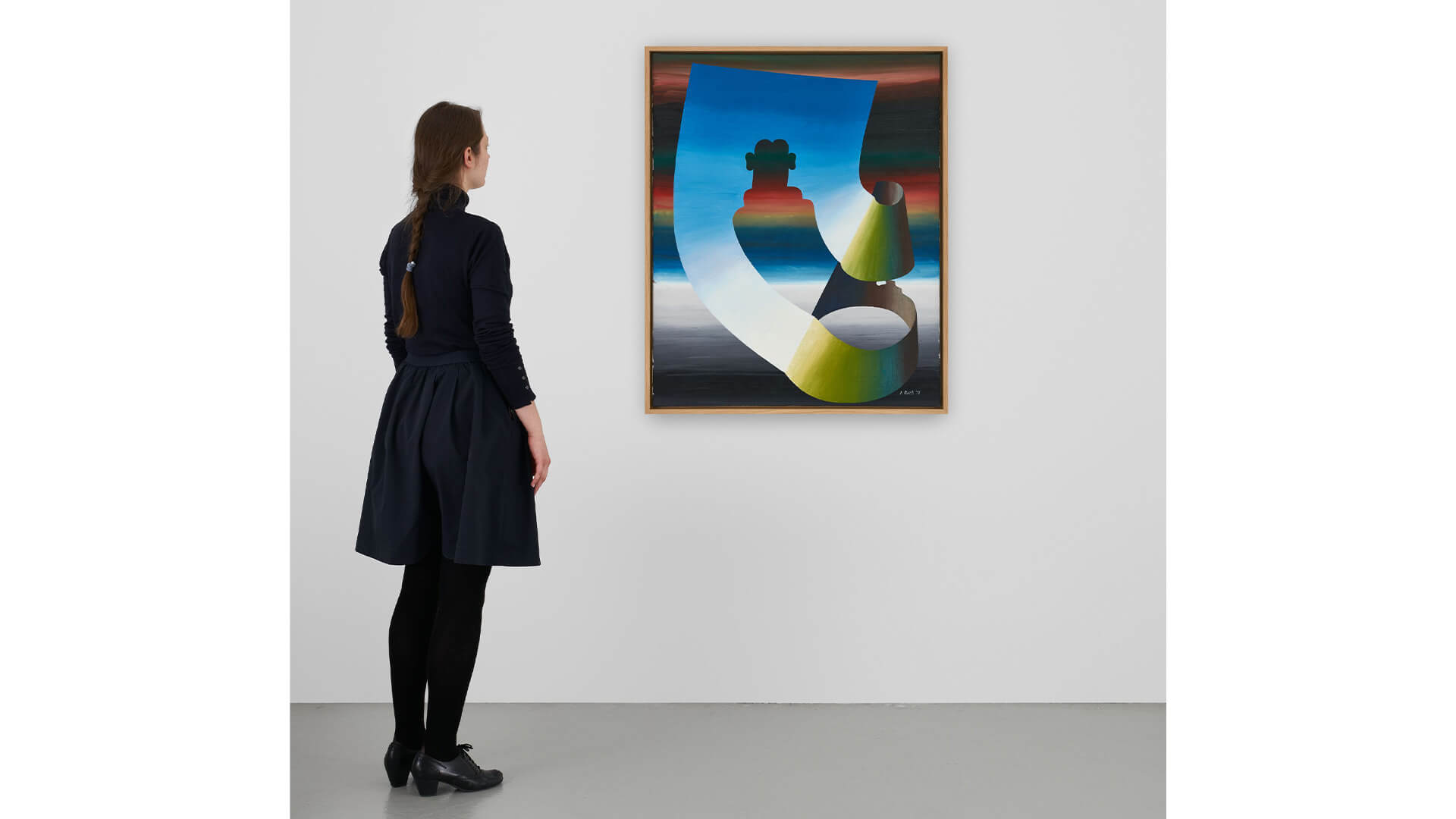
For Roth, much of the material for his artistic output came from his everyday experiences. Of this, curator Gary Garrels reflects: ‘Roth continually circled back to earlier ideas and processes, reinterpreting and transforming works, so that linearity or closure is consistently defied. Transience and order, destruction and creativity, playful humour and critical inquiry, the abject and beautiful maintain an unrelenting balance throughout his work. A sense of art and life as imminently tragic but boundlessly open distinguishes the career of Dieter Roth, unfolding over decades but remaining alive and relevant today.’ [1]
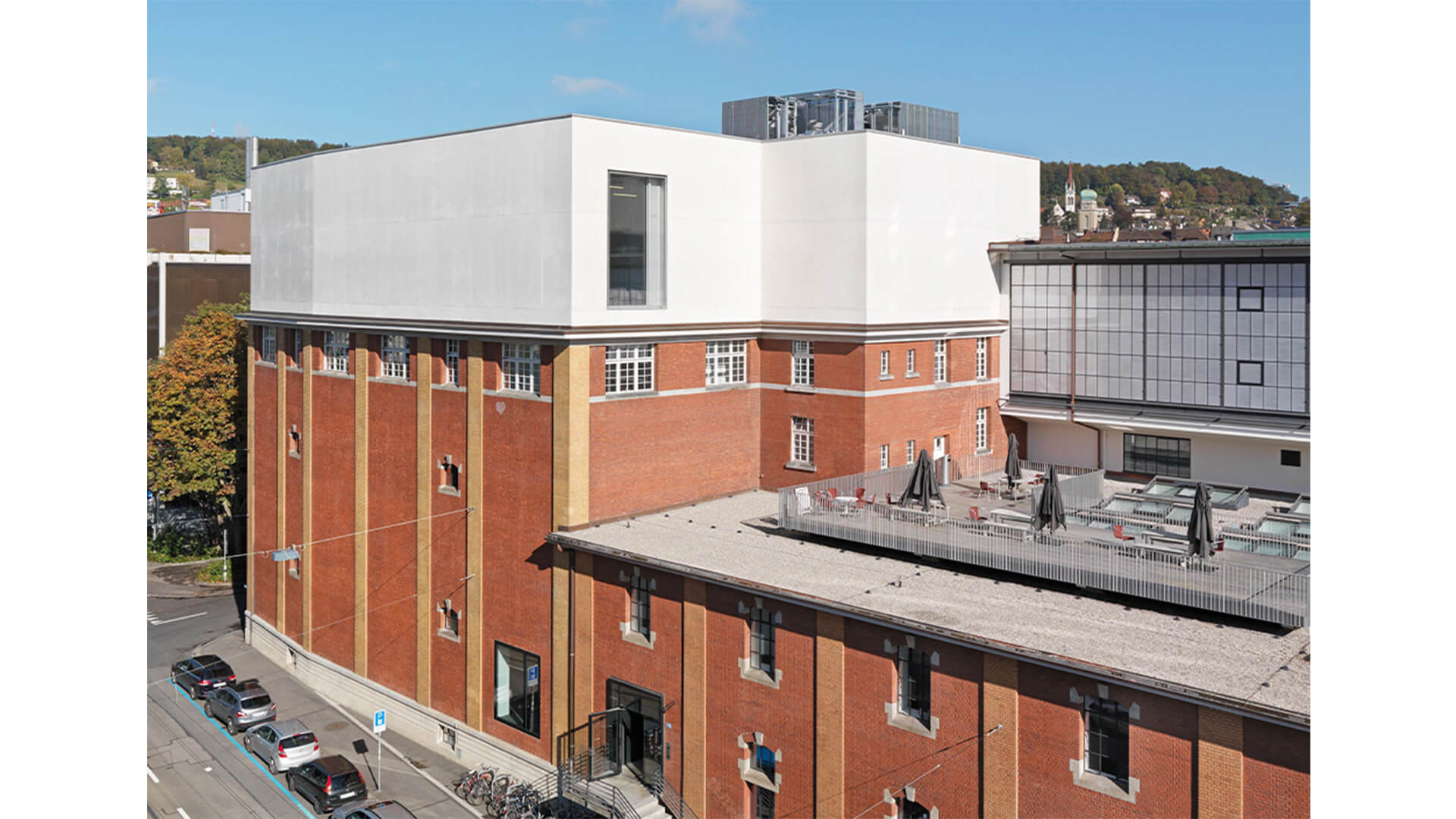
Hauser & Wirth Zürich
Since opening our first gallery in 1992, Zurich continues to be a key location for Hauser & Wirth with two spaces in the former Löwenbräu brewery building, along with our Publishing Headquarters and newest gallery on Rämistrasse. Dieter Roth’s work can be viewed by appointment alongside solo exhibitions by Phyllida Barlow and Mary Heilmann.
All Images: Dieter Roth, Doppel-Selbstbildnis (Double Self-portrait), 1973 © Dieter Roth Estate. Photo: Jon Etter; Dieter Roth portrayed by Lothar Wolleh © Lothar Wolleh Estate, Berlin; ‘Dieter Roth – Selbste’, Aargauer Kunsthaus Aarau 19.08.-06.09.2011, with kind permission of Aargauer Kunsthaus; Dieter Roth, Doppel-Selbstbildnis (Double Self-portrait), 1973 © Dieter Roth Estate. Photo: Jon Etter
[1] Gary Garrels quoted in the Museum of Modern Art, ‘Roth Time. A Dieter Roth Retrospective,’ New York NY: Museum of Modern Art, unpag. (exh. brochure)
